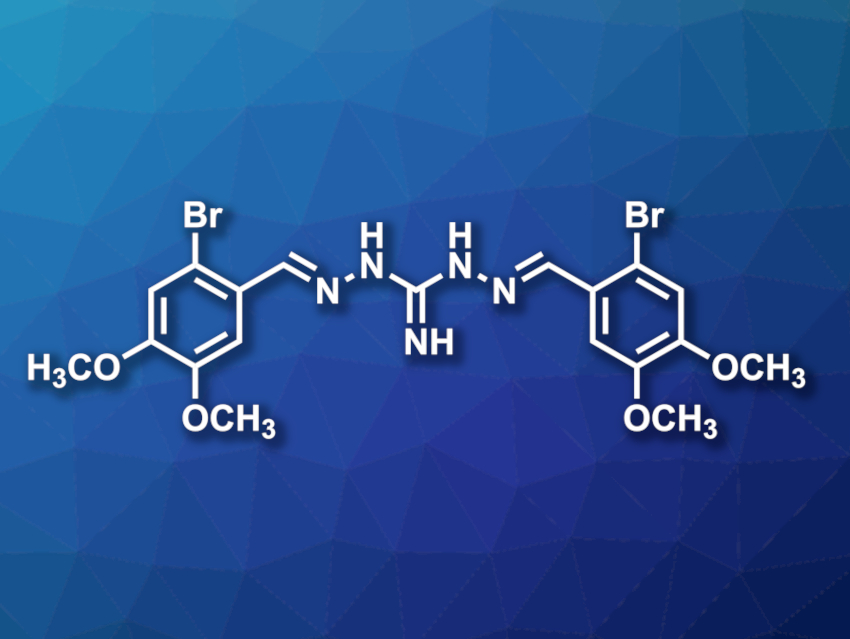The giardia parasite, Giardia duodenalis, is a common parasitic infection in dogs and cats. It is also responsible for almost one billion human infections annually. Giardia infection has been defined as a neglected disease by the World Health Organisation (WHO), i.e., one with limited therapeutic options compromised by poor tolerance, high-side effect levels, and growing drug resistance.
Sam Abraham, Murdoch University, Australia, Adam McCluskey, The University of Newcastle, Callaghan, Australia, and colleagues have synthesized and evaluated 44 members of a new class of compounds that show promise as anti-giardial agents. Using simple condensation chemistry approaches, the candidate compounds were synthesized from four compound libraries based on the known antiparasitic agent robenidine  (pictured on the right). They were then evaluated in animal models of giardia. All active compounds were also screened for antibiotic and cytotoxic effects.
(pictured on the right). They were then evaluated in animal models of giardia. All active compounds were also screened for antibiotic and cytotoxic effects.
The best candidate in the screening (pictured at the top) showed low toxicity, but high kill efficacy, nanomolar potency, and a time to kill of less than hours. Critically, no parasite regrowth was observed after the drug candidate was removed from the testing medium. These data suggest that this or similar novel analogues, with rapid giardia-killing properties and no regrowth, might be useful starting points for the development of a single-dose giardia treatment.
- Antigiardial activity of novel guanidine compounds,
Andrew J Stevens, Rebecca Abraham, Kelly A Young, Cecilia C Russell, Siobhann N McCluskey, Jennifer R Baker, Bertha Rusdi, Stephen W Page, Ryan O’Handley, Mark O’Dea, Sam Abraham, Adam McCluskey,
ChemMedChem 2022.
https://doi.org/10.1002/cmdc.202200341




